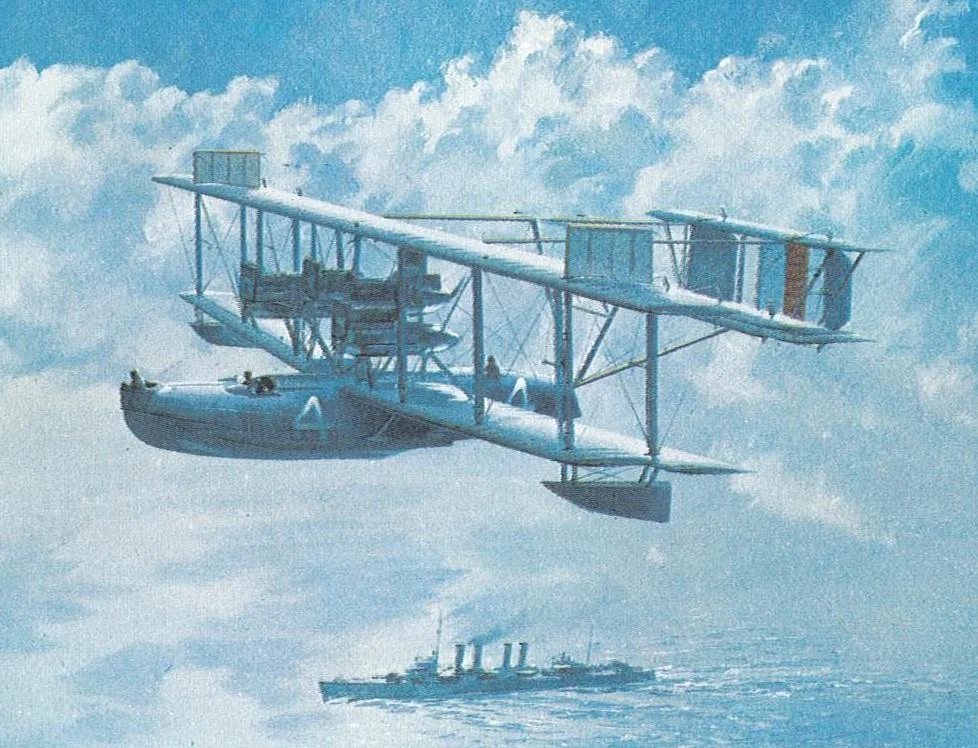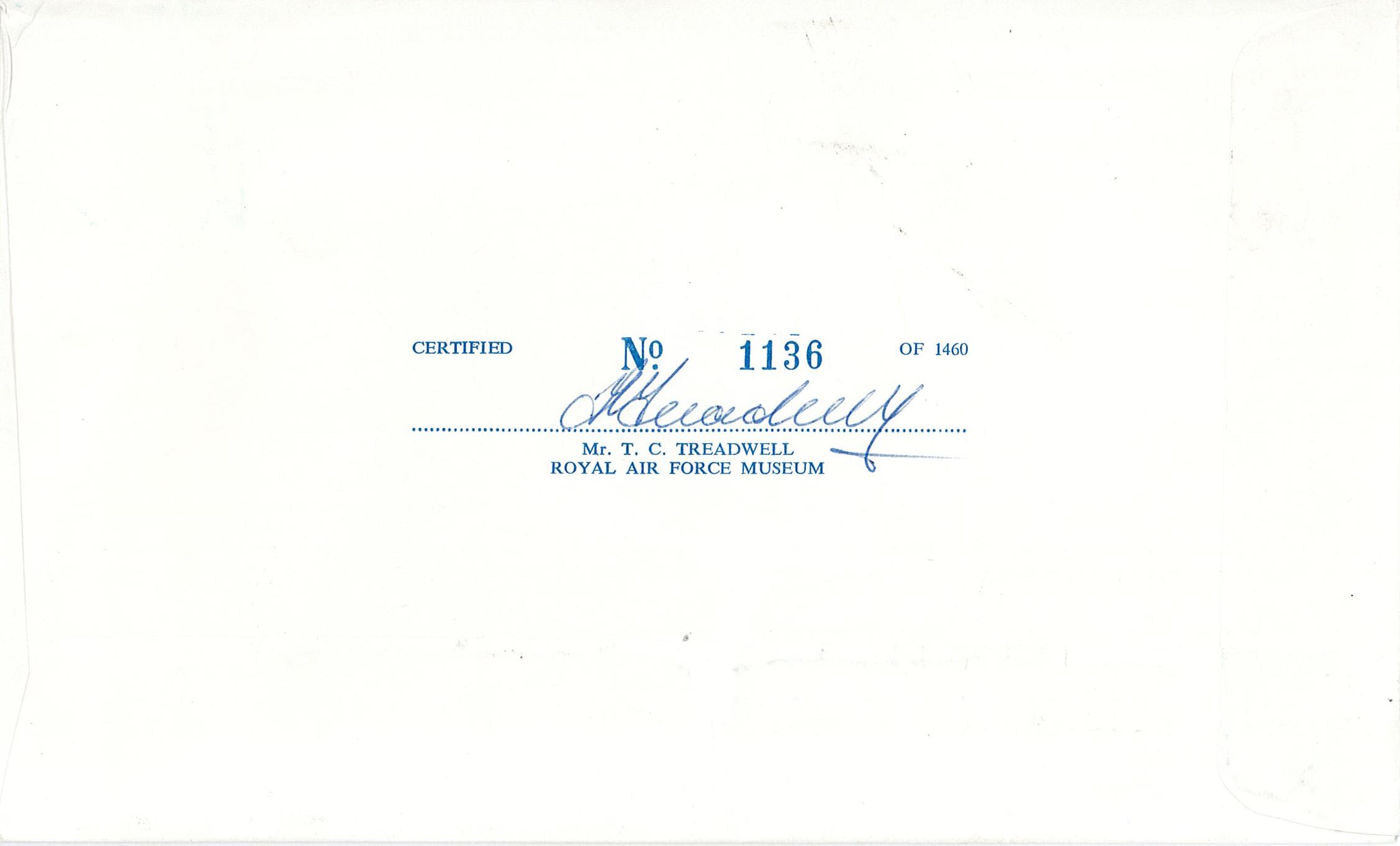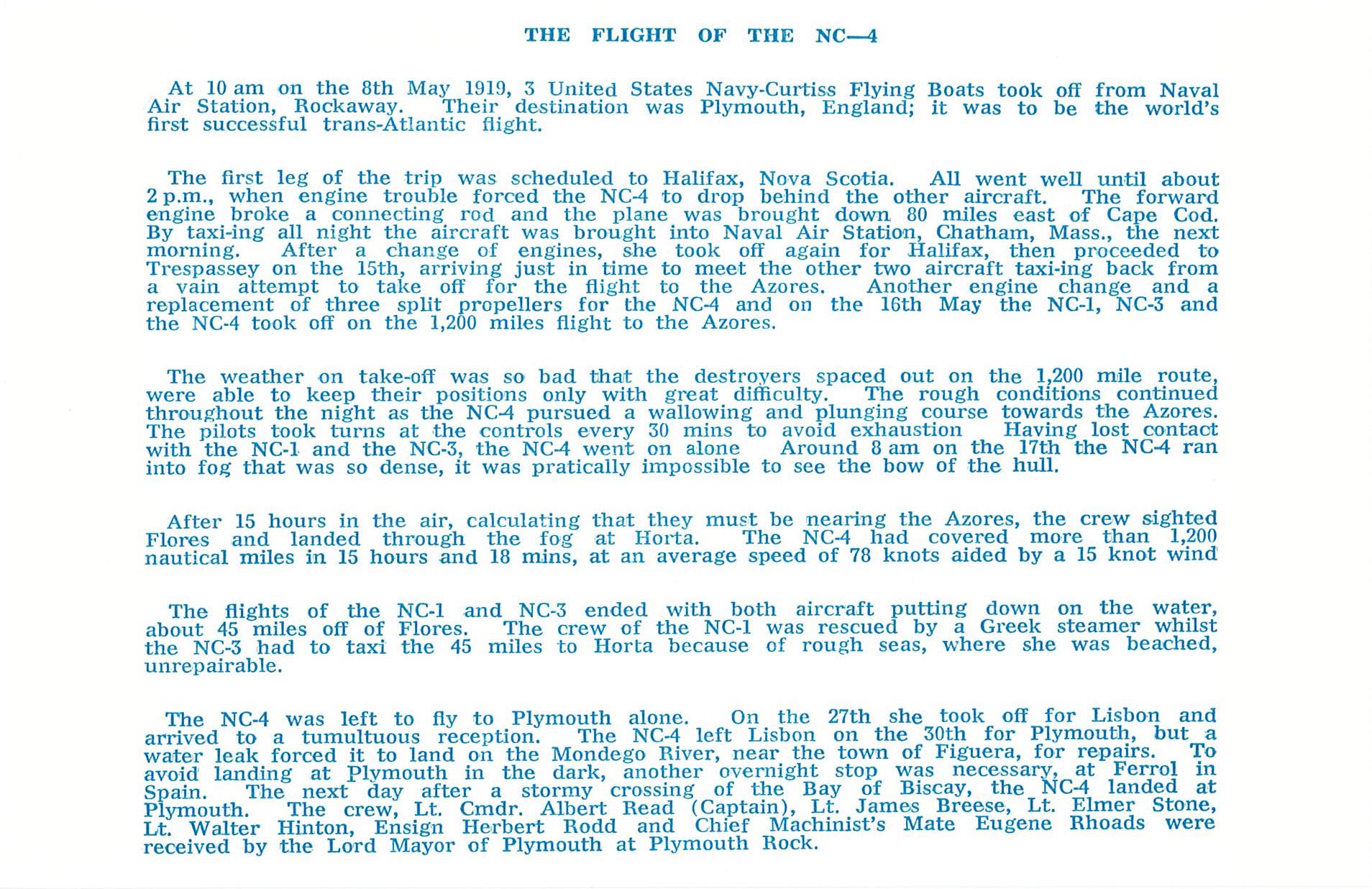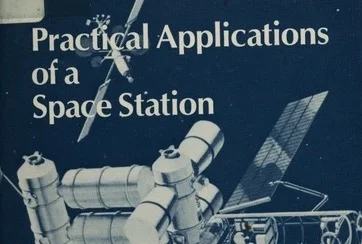Transatlantic Flight, 1919
Today is the 98th anniversary of the end of the first flight across the Atlantic Ocean. Eight years before Charles Lindbergh’s more famous first non-stop flight, a team of US naval aviators set off from Rockaway, New York in four biplane flying boats on May 8th, 1919. Twenty-three days later, only NC-4 was still airworthy as it landed near Plymouth Rock in the United Kingdom, following stops in Halifax, the Azores, Lisbon, and an emergency landing on the Mondego river in Portugal. The flight demonstrated the need for advances in aircraft reliability, as leaky hulls, split propellers, broken connecting rods and all manner of engine trouble delayed the planes. But it also illustrated the great importance of weather reports and forecasting for long distance flight. For the big hop from Canada to the Azores, the planes enjoyed a 15 mph tailwind, accounting for more than 20% of their groundspeed.
Lieutenant Francis W. Reichelderfer was part of the Navy aerology crew supporting the flight. Trained in meteorology during World War I, Reichelderfer was refused a post in Europe during the War when a British officer requested a man with a less German name. After the war, Reichelderfer was posted to Lisbon to support the Navy Transatlantic Flying Expedition. He gathered weather data from European weather services, as well as observations sent by wireless telegraphy from Navy destroyers strung along the flight route across the Atlantic.
The expedition was an early part of Reichelderfer’s long and distinguished career. Reichelderfer moved from the Navy to the leadership of the US Weather Bureau in 1938. He oversaw the introduction of radar, satellites, and computer modeling into Weather Bureau forecasting practices over his 25-year term as Chief.
A man who had seen a lot of shifting winds. Francis Reichelderfer, circa 1979.
These images come from a postal catchet created to commemorate the 60th anniversary of the flight. The cachet features a color painting of the NC-4 on the envelope. Inside were a description of the flight, a photograph of Reichelderfer, and a timeline of his career in meteorology. Sold to stamp collectors in order to raise money for the Royal Air Force Museum, 1460 copies were flown back and forth across the Atlantic on an RAF VC-10. This copy, from my collection, was autographed by Reichelderfer.
Learn More
- Roger Turner, “Francis Wilton Reichelderfer,” Complete Dictionary of Scientific Biography, 2008.
- NOAA Bicentennial Web Pages, “Francis Reichelderfer: Sailor, Aviator, Meteorologist, and Director of the U.S. Weather Bureau.”
- Smithsonian National Air and Space Museum, “Curtiss NC-4.”










